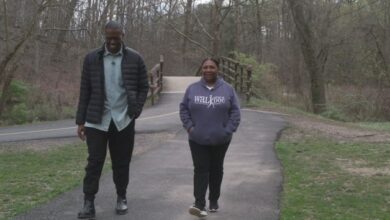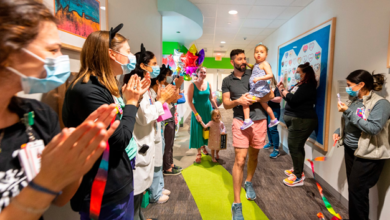Harvard team makes solar eclipse accessible to visually impaired

(CAMBRIDGE, Mass.) — As many turn their eyes to the skies to watch the solar eclipse, some with vision impairment are turning their ears to a new gadget.
The LightSound is a 3D-printed device, about the size of a cell phone, which can register the changing brightness of light. It then turns that information into a variety of sounds using a process known as “sonification.”
“Sonification is just taking data and converting it into sound,” says Allyson Bieryla, an astronomer at Harvard University. Bieryla came up with the idea for the LightSound ahead of the 2017 solar eclipse, alongside Wanda Díaz-Merced, an astronomer and sonification researcher who is blind. Bieryla says the LightSound represents an effort to use sonification to make astronomy more accessible to those with physical impairments.
To do this, the LightSound emits a range of sounds based on the amount of light it receives, Bieryla tells ABC Audio.
“We have this Midi synthesizer board on the device that basically allows us to map different instruments to the data values.”
A flute, for example, represents bright light. When it gets darker, Bieryla says “the midrange goes to a clarinet, and then in totality, or like a dark room or something, you might hear a clicking.”
The LightSound’s clicking slows down the darker its environment becomes.
“For totality, we really didn’t want to distract with a lot of sound, so we chose, like, the absence of light, the absence of sound,” says Bieryla. She says that’s because totality – the brief moment when the moon completely obscures the sun – brings with it other environmental changes.
“A lot happens during totality,” says Bieryla. “Temperature changes, people react, you know, insects and animals react.”
Since 2017, Bieryla and her team have distributed hundreds of LightSound devices around the world. They say they’ve donated more than 200 devices in the lead-up to the 2024 eclipse, and feature instructions on their website that detail how to build a LightSound device at home.
“We don’t want people to make a profit off of it,” says Bieryla. “We want to give it to the community.”
As for what’s next, Bieryla says they’re looking into ways to add haptics to the Lightsound, which would vibrate the device based on the amount of light it receives. It’s intended, she says, to bring the eclipse experience to those who are both sight and hearing impaired.
Copyright © 2024, ABC Audio. All rights reserved.






